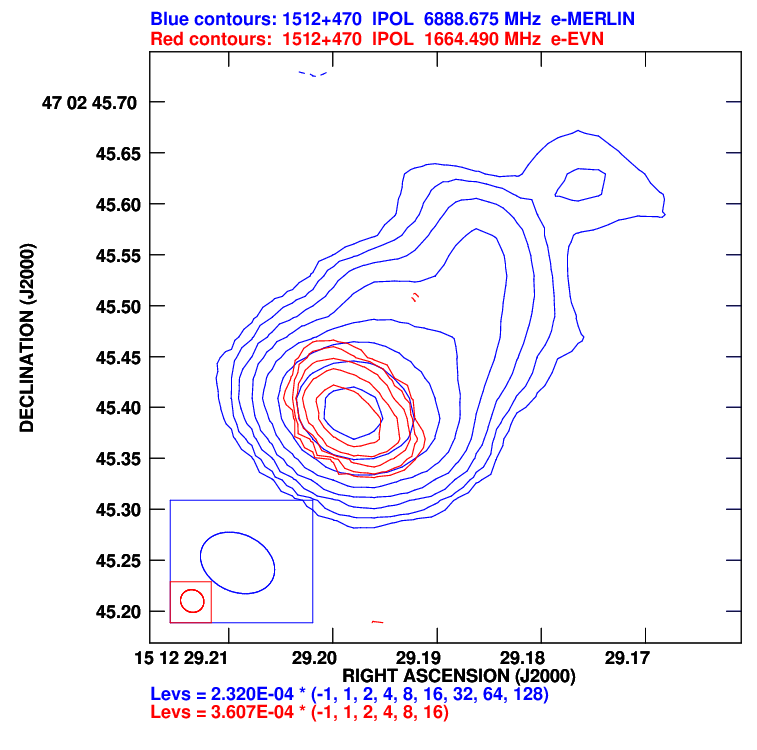Daily Image
05-02-2013Investigating compact ultra-steep spectrum radio souces with e-VLBI
| Submitter: | Megan Argo |
| Description: | Ultra-steep spectrum (USS) sources are those with a radio spectral index of <-1.4. The subset of such sources which are compact on arcsecond scales have not been well-studied, and clues as to their nature are few. Suggestions which have been put forward include radio galaxies located near the epoch of re-ionisation, young obscured radio galaxies, steep-spectrum core AGN, and Galactic pulsars. In an attempt to narrow down the possibilities we have observed a small sample of such objects with the e-EVN and e-MERLIN. Our observational results, accepted for publication in MNRAS Letters, show that these sources are a diverse group. The first of our detections, J072212+291042, has a VLBI-measured flux density only 27% of the simultaneous WSRT flux density implying structure on intermediate scales. Since the source is undetected with e-MERLIN at 6.6GHz, this implies the spectral index remains steep at these frequencies. With no catalogued counterparts at other wavebands, the nature of this source remains unclear. Given its properties, the most likely scenario is either a steep spectrum AGN core, or a Galactic pulsar. No known pulsar or pulsar candidate is listed at these coordinates, but further follow-up will allow us to test this scenario. The only source in our sample to have an SDSS counterpart, J130612+514407 appears to be associated with a brightest cluster galaxy at a redshift of 0.2773. The EVN observations recover 94% of the Westerbork flux but, since the source was not observed with e-MERLIN, we do not yet know if the spectral index remains steep at higher frequencies. The SDSS association, together with corresponding 2MASS and ROSAT counterparts, suggest that the AGN core scenario is the most likely in this case. The final VLBI-detection in this survey, J151229+470245 (image) is something of an anomaly. Owing to an error in one of the catalogues used to compile the initial sample, the source turns out to have "only" a steep spectrum, but not ultra-steep. This makes it a peculiar compact steep spectrum source, rather than a USS source, but interesting nonetheless. The EVN results recover less than 21% of the simultaneous WSRT-only flux density, and show the source to be resolved on VLBI scales, elongated in a NE-SW direction. The e-MERLIN map shows an apparent core-jet morphology, with the "core" coinciding with the (resolved) EVN source, suggesting that it is not an AGN core. The observed steep spectrum, low brightness temperature and lack of variability between VLA and WSRT epochs suggest lobe emission on 10-mas scales, rather than strong core emission. What makes this source peculiar is that it is an example of an infrared-faint radio source, and the first of these to show signs of being resolved on VLBI scales. Whilst this is a small sample, and the data are clearly not sufficient to uniquely determine the nature of these sources, these results demonstrate that VLBI is a useful tool in attempting to understand this class of object. [Argo et al, MNRAS Letters accepted] |
| Copyright: | ASTRON/JIVE |
| Tweet |  |
